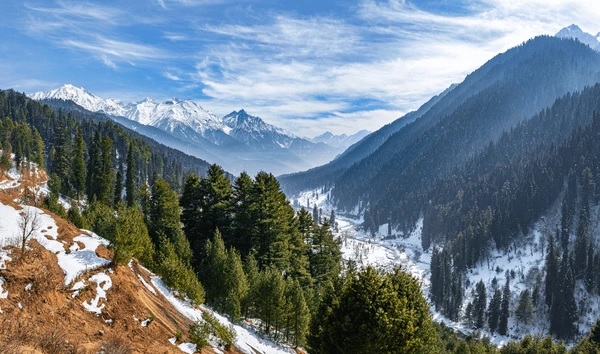The past three years saw good saffron production due to favourable weather conditions but the dry September and October has had an impact this year
As the plucking of saffron begins across the expansive meadows of Pampore, the dry spell in the month of October has affected the golden crop’s production far fewer than usual flowers being seen in fields in South Kashmir’s Pulwama district. This October saw 95% deficit rain in South Kashmir.
“This time, there was no rain in October. Also, September witnessed very minimal rainfall, which has affected the production and very few flowers are available for plucking,” said Khursheed Ahmad, who owns three kanal land close to the newly established Spice Park.
“The fields which have a sprinkler system network did not get affected; however, the entire area is not covered under the sprinkler irrigation scheme. It looks like the production will be very less compared to the previous three years,” he said.
Also Read | Taste the Heritage: Kashmiri Saffron’s Journey from Bloom to Cuisine
The past three years saw good saffron production due to favourable weather conditions but the dry September and October has had an impact this year.
“We are not yielding good saffron flowers that we fetched in the previous three years,” said Sheikh Mohammad Shaban, a saffron grower from Drusoo Pulwama said, adding, “The last three years, the saffron production registered a good harvest which helped the growers to earn more money.”
The rain-fed saffron belt has seen a steady decline from 5,000 hectares to 3,000 hectares in the last two decades as growers, staring at losses, converted the fields into other business units. The government has been trying to expand its production by introducing saffron into other districts including Narwav in Baramulla district.
“A farmer was trying to do it on a trial basis and was successful. Now, more and more growers could get inclined towards its cultivation,” said Riyaz Ahmad, a local villager from Fatehgarh.
Saffron production had peaked in Kashmir in the 1990s with an annual average output of around 15.5 metric tonne. However, it declined due to untimely rains, drought, wanton constructions and the conversion of saffron fields into commercial enterprises. The production was 11.72 tonnes in 2015.
Also Read | Unlocking the Secrets of Kashmiri Cuisine: The Magic of Dried Cockscomb Flower (Mawal)
To improve production of saffron, the National Saffron Mission was launched in 2010. The centrally sponsored scheme has helped growers. Besides bore wells, the sprinkle system has given a new life line to this crop. “More than 100 bore wells were sanctioned but many are under construction or not working,” Yasin Lone, another grower, said.
A senior agriculture officer, however, said more than 60 bore wells are working and more are being installed. “In the last seven to eight years, under the National Saffron Mission, many works have been taken up and that’s helping boost production,” the officer said, adding that plucking of saffron flowers had just begun and it was too early to gauge the overall output.
Director agriculture Iqbal Choudhary, who visited saffron fields on Friday, meanwhile, said the goal was to bring more area under cultivation. “The National Saffron Mission will help to revive the production. Earlier our per hectare yield was 1.8 kg and now it’s touching four to five kilograms and in coming years it will go further up,” he said.
Also Read | A Smoky Symphony: Unveiling the Allure of Kashmiri Faere
According to government data, the annual yield of saffron in Kashmir crossed 13 metric tonne in 2020 for the first time in 10 years and increased with each passing year. However, the UT administration informed the Parliament in February that the yield of the golden spice had come down from 8 metric tonne in 2010-11 to 2.6 metric tonne in 2023-24 (provisional), an overall decline of 67.5%.




